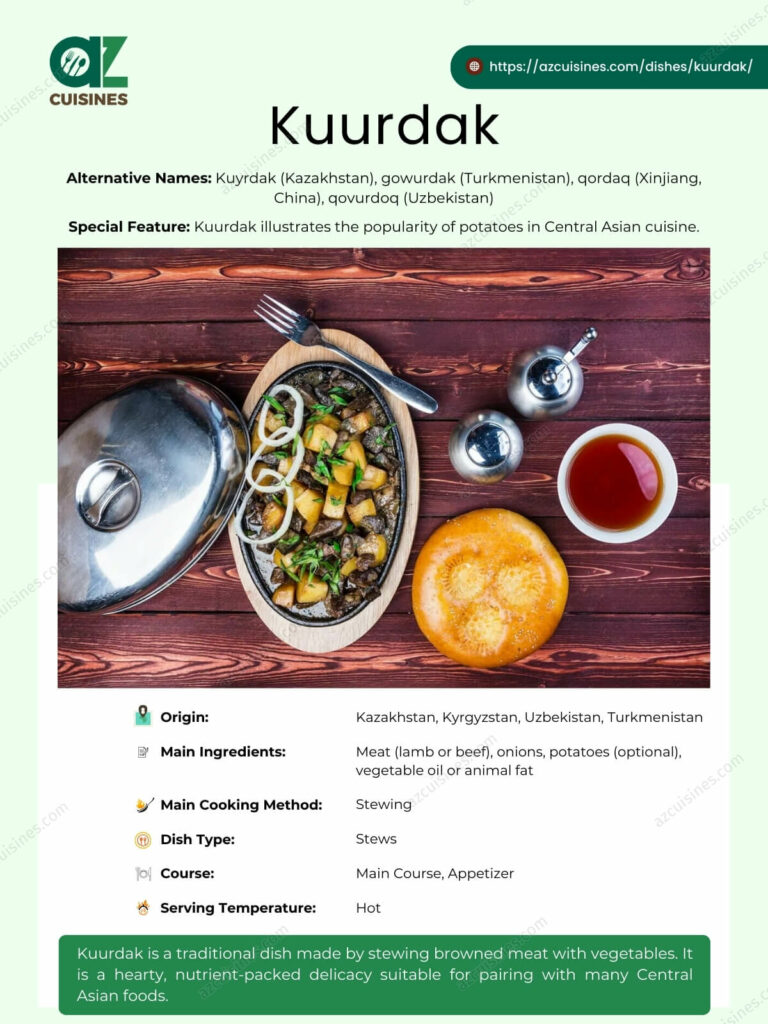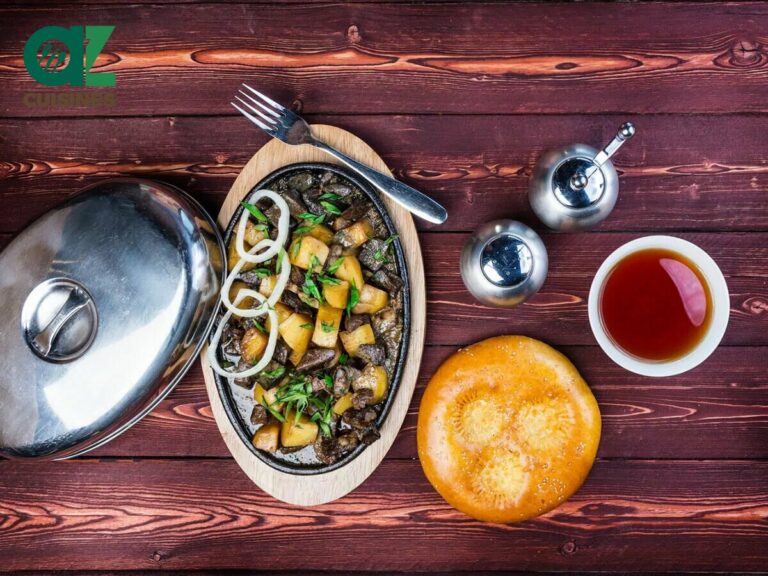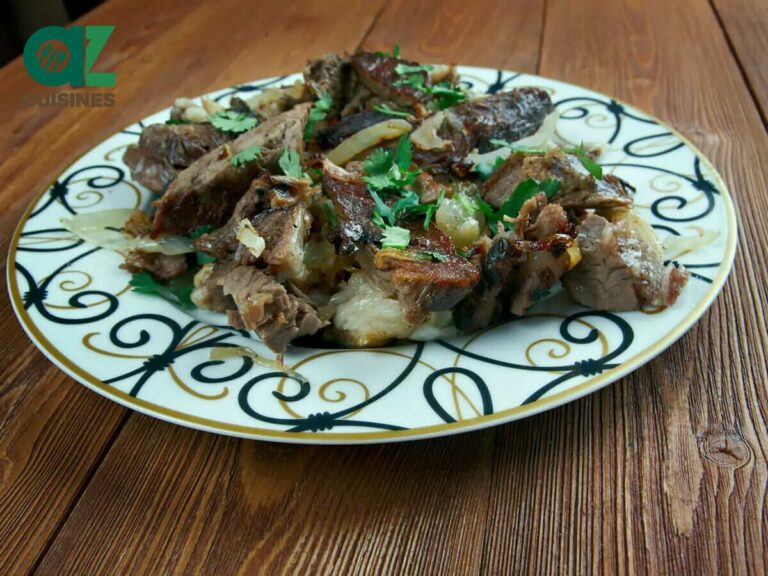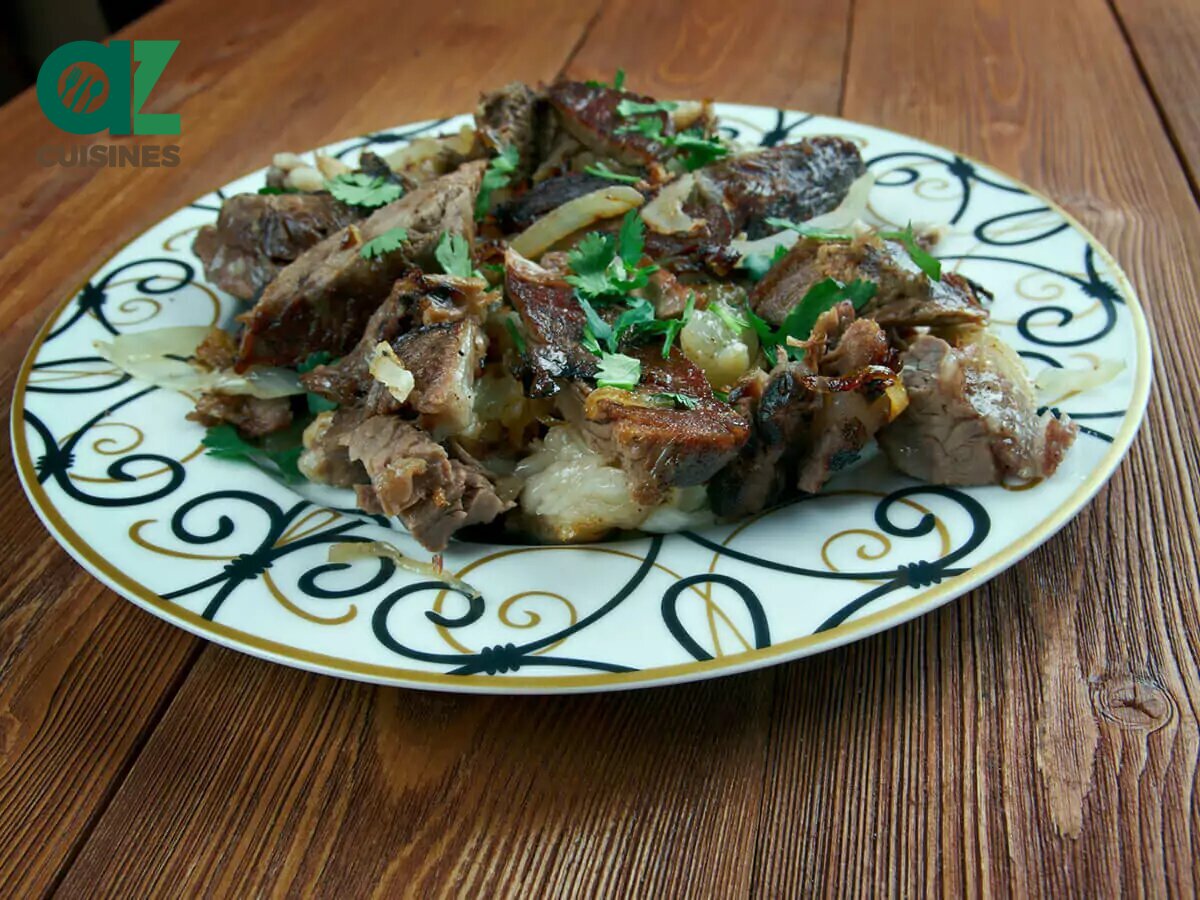Kuurdak: Basic Information
Pronunciation
Alternative Name(s)
Dish Type
Course
Mealtime
Popular Variations
Kuurdak: Ingredients and Preparation
Main Ingredients
Main Cooking Method
Preparation Process
Kuurdak: A Deep Dive
Cultural Significance
Taste
Texture
Aroma
Color
Serving Style
Serving Temperature
Accompaniment
Occasions
Seasons
Special Diets
Calories
Popularity
Popular Similar Dishes
- Kavurma
- Shurpa
Popular Dining Area
Kuurdak is a time-honored meat dish originating in Central Asian countries, particularly Kazakhstan, Kyrgyzstan, Uzbekistan, and Turkmenistan. It is also popular in Mongolia and Uyghur cuisine in China.
Kuurdak is made by sautéing chunks of meat, usually lamb or beef, with vegetables before stewing them in water in a covered pot.
The method gives rise to its name, which means “fried” or “roasted.” “Stewed browned meat” is a common English translation.
Kuurdak comes in traditional and modern variations. Classic kuurdak consists of meat and offal browned in animal fat and cooked with only onions and garlic.
Meanwhile, the modern version replaces the fat with cooking oil and adds various vegetables to the mix, usually potatoes.
Kuurdak is suitable for all occasions, from ordinary meals to festive feasts. The browned and stewed meat dish goes well with tandyr non (Central Asian bread) and simple salads.
Some people even serve it as an appetizer before rich foods like beshbarmak (boiled meat and egg noodles).
Continue reading to discover more exciting information about kuurdak, such as its pros and cons and common concerns about the dish.
Key Points
Kuurdak Images
Pros And Cons of Eating Kuurdak
Below is a summary of the strengths and weaknesses kuurdak has.
Pros
Cons










Adam Sam
Senior Food and Drink Editor
Expertise
Food Writer & Recipe Developer, Recipe Tester, Bartender, Cooking-video Maker, Editor In Chief
Education
Adam Sam, an experienced food writer and recipe developer, is passionate about blending diverse culinary traditions, national dishes, and innovative beverages, showcasing his proficiency in both traditional and modern recipe testing.
As the Editor-in-Chief, he elevates culinary content from street food to fine dining, focusing on Western cuisine and types of drinks at azcuisines.com, and is professional in creating engaging cooking videos that simplify complex dishes and ingredients.
His passion for food is evident in his writing, where he uniquely merges various cultures, traditions, and contemporary trends, skillfully combining classic recipes with modern cooking methods.